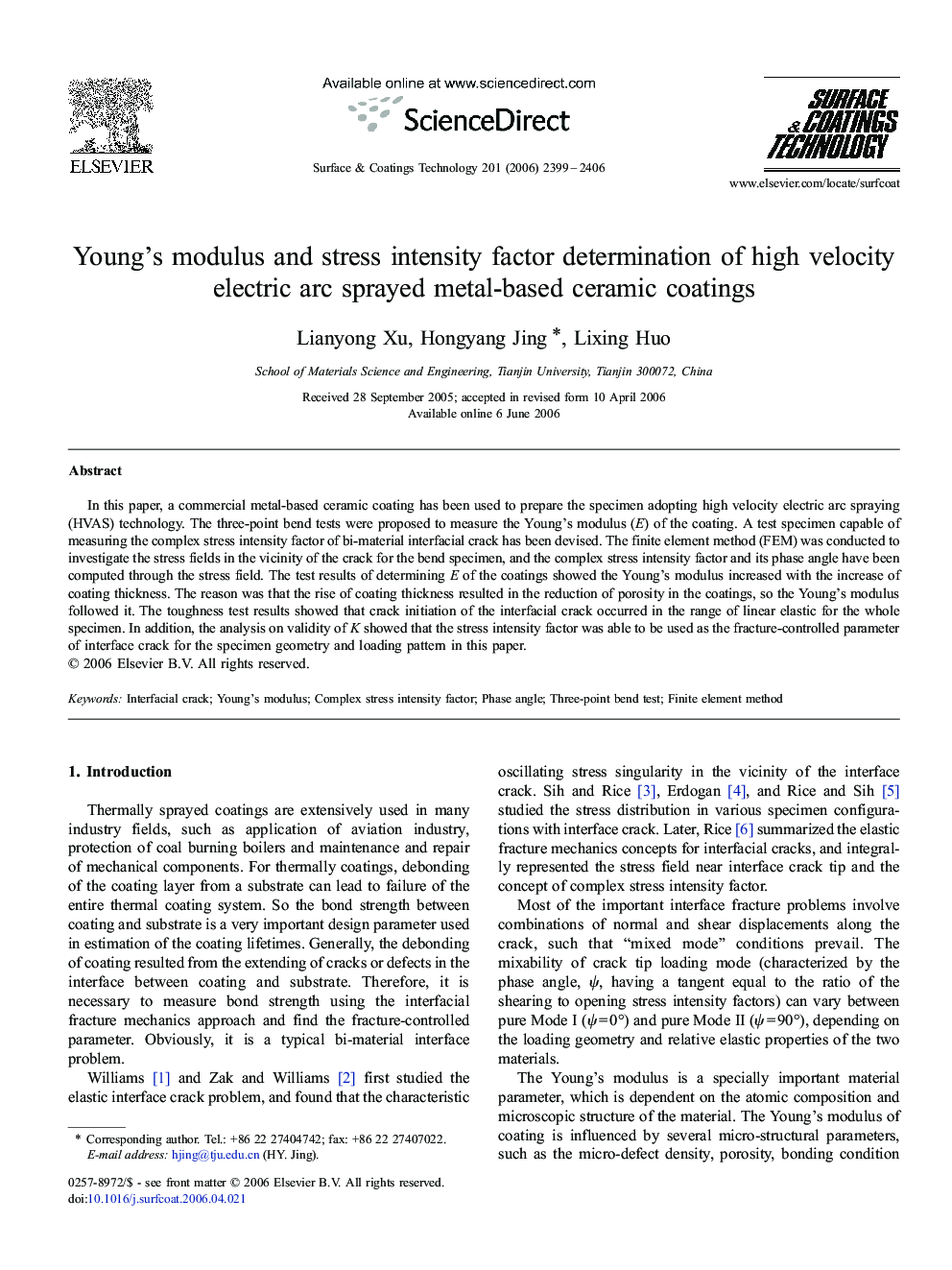| Article ID | Journal | Published Year | Pages | File Type |
|---|---|---|---|---|
| 1663340 | Surface and Coatings Technology | 2006 | 8 Pages |
In this paper, a commercial metal-based ceramic coating has been used to prepare the specimen adopting high velocity electric arc spraying (HVAS) technology. The three-point bend tests were proposed to measure the Young's modulus (E) of the coating. A test specimen capable of measuring the complex stress intensity factor of bi-material interfacial crack has been devised. The finite element method (FEM) was conducted to investigate the stress fields in the vicinity of the crack for the bend specimen, and the complex stress intensity factor and its phase angle have been computed through the stress field. The test results of determining E of the coatings showed the Young's modulus increased with the increase of coating thickness. The reason was that the rise of coating thickness resulted in the reduction of porosity in the coatings, so the Young's modulus followed it. The toughness test results showed that crack initiation of the interfacial crack occurred in the range of linear elastic for the whole specimen. In addition, the analysis on validity of K showed that the stress intensity factor was able to be used as the fracture-controlled parameter of interface crack for the specimen geometry and loading pattern in this paper.
